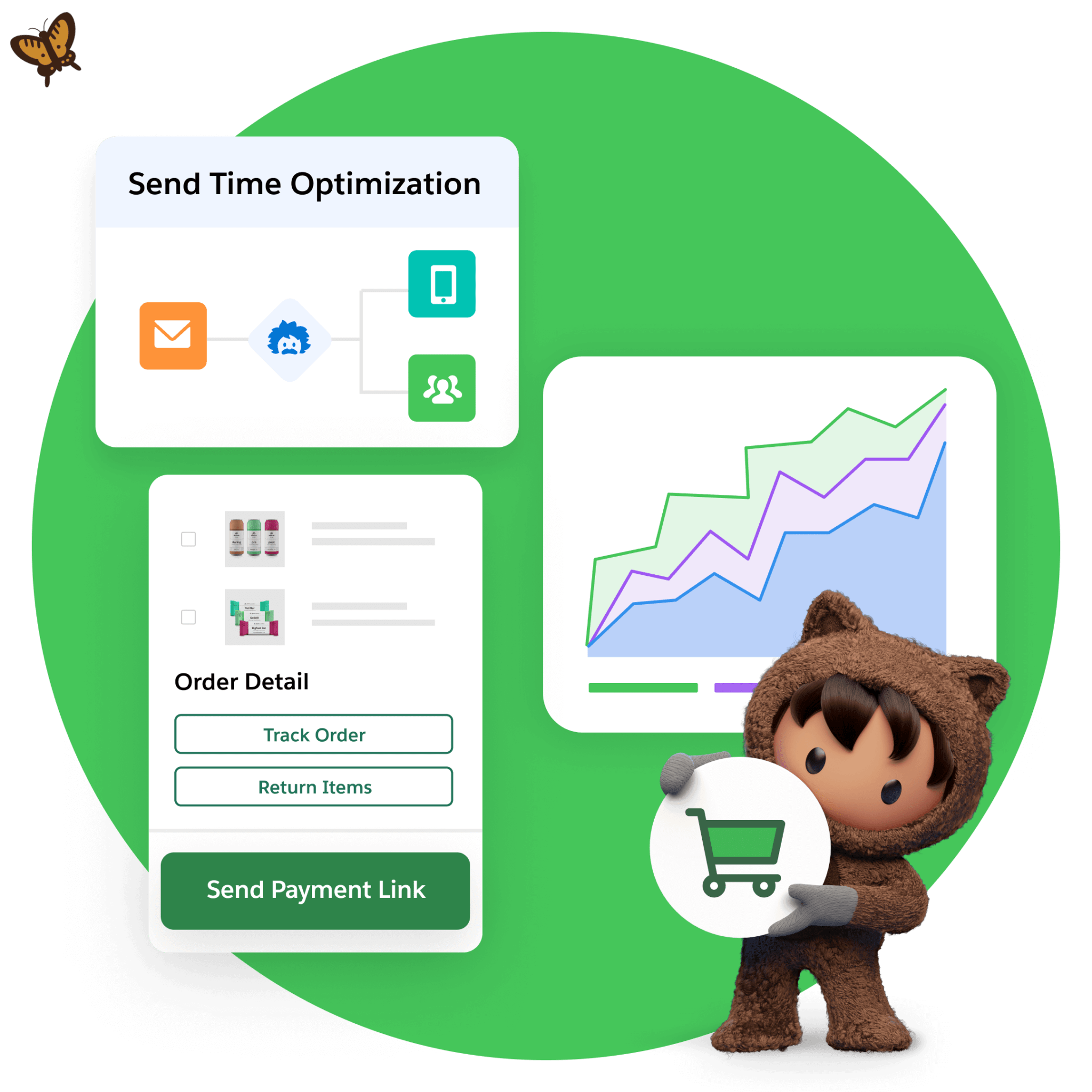Every day, new businesses are being created to provide products and services for customers. Before opening your doors, however, your businesses need to consider a few factors that will ultimately impact their chances of success: location, market conditions, supply versus demand, and — most importantly — a budget. Because small and medium-sized businesses (SMBs) typically have limited resources — both human and capital — creating and managing a budget is absolutely imperative for meeting business goals.
This guide will help you create a budget for your small business. Learn what to consider, the factors you need to consider, and some best practices.
What you’ll learn:
- What is a business budget?
- Why do small businesses need a budget?
- Budget factors to consider
- Create a small business budget in 5 steps
- Best practices to manage your budget
- Common budgeting mistakes to avoid
- Budgeting tools for small businesses
- Small business budgets made easy with the right tools
What is a business budget?
Simply put, a business budget allows organizations of all sizes to estimate potential income and anticipated expenses over a set period of time: daily, weekly, monthly, and annually. For those looking to start a business, having a sound budget in place can help manage resources and cash flow. It also helps to establish expectations for future growth.
With a budget specifically designed for a small business, you have a structured financial plan that outlines income, expenses, and savings. Creating a budget for a smaller team is no different than the budgets that many people create to stay on top of their personal finances. Keeping track of income versus expenses helps you stay financially secure and profitable in the future. A budget helps businesses to:
- Track overall expenses
- Cut overall costs
- Prevent overspending
- Maximize resource allocation
- Make informed decisions
- Prepare for the unexpected
Start with SMB Basics
Why do small businesses need a budget?
Budgeting can help track cash flow, reduce financial risk and uncertainty, and achieve a clear vision for growth. A solid budget can inform small business marketing strategies, help sales teams determine how to best capture leads, and help you put innovative business ideas into action.
Having a budget is more than just a good idea — it’s foundational if a business hopes to survive (and flourish). Here are some of the other benefits a small business budget provides.
- Better financial control: With a small business budget in place, key stakeholders are able to more efficiently track revenue and expenses, which is important for maintaining day-to-day operations.
- Improved decision-making: It’s well-established that data-driven decisions are smarter decisions. By routinely consulting budget reports, businesses can make informed decisions about asset management, investing, and financing.
- Error-free debt management: A budget outlines planned and controlled financial activities — including payment prioritization — that enable businesses to manage debt responsibly.
- Boosted business growth: SMBs can make strategic investments and resource-allocation decisions that align with extended business plans to ensure more sustainable growth.
Budget factors to consider
Because small businesses’ finances constantly change, you might find it difficult to nail down exactly what should be included as part of your budget. And because what works for one cycle won’t necessarily hold true for another, budgets for any size business must be reevaluated consistently. With that in mind, here are the key components that make up a typical small business budget.
- Revenue estimates: Often forecasted from sales of products or services or investments, these estimates fluctuate over time and are a general idea of what to expect, while still anticipating the unexpected.
- Fixed costs: These include recurring expenditures that are essential for business operations, such as overhead, salaries, insurance, and subscriptions. These costs tend to remain the same for relatively long periods of time.
- Variable costs: These include expenses such as utilities, raw materials, and marketing expenses. These expenses will always be part of the big picture, but can change from one month to the next depending on business activity.
- Emergency funds: A budget needs to allocate money to cover operational expenses (for example, payroll, utilities, insurance) in the event that a business experiences an emergency. A devastating natural disaster, the sudden loss of a primary vendor, or a sudden cultural shift all can impact revenue, for example.
- Profit margins: How much revenue turns into profit? Many factors play into this equation, and they’ll evolve. This is an important factor to consider from planning to production to pricing. Profit isn’t only central to your budget management, it’s also important for business survival.
Here’s a simple example of a weekly budget breakdown for a small company.
Create a small business budget in 5 steps
Ready to create your own small business budget? One caveat: a willingness to constantly reevaluate expenses is important, so get ready to keep up with this. It doesn’t have to require a significant time commitment, but budgeting should be a regular part of your administrative business routine.
Here’s a step-by-step guide to creating a winning small business budget. While not comprehensive or applicable to every business under the sun, the basics here should generally apply:
Step 1: Assess your sources of income
First, identify all revenue streams. You’ll be able to then think about how each one impacts your bottom line. For most businesses, each revenue stream brings with it a set of conditions, risks, and rewards. Perhaps you offer various tiers of services or products, consider all the associated earnings of each.
Step 2: List and detail your expenses
Next, you’ll list all of your business expenses so you can better prepare for them, ideally with funds that you’ve already set aside. It’s a good idea to separate fixed and variable costs, which allows your partners or collaborators to identify trends and spikes in the cost of services.
Remember: fixed costs are expenses that remain constant regardless of the business’s level of activity. Variable costs fluctuate based on the business’s operations and sales volume. Calculate both, and be sure to revisit your expenses regularly to make sure you’re accounting is accurate.
Step 3: Establish your spending priorities
Then you’ll need to find out the cost of spending for your business. Calculate the fixed and variable costs from the list you just created. These costs impact your business’s short-term survival can’t be ignored in the wake of long-term expansion plans. Focus on current expenses first such as:
- Payroll: Salaries, benefits, and taxes for employees.
- Rent: Office or retail space rental fees.
- Utilities: Electricity, water, and internet services.
- Insurance: Liability, property, and employee insurance.
After covering these fixed costs, devote remaining resources to non-essential priorities, such as:
- New shelving: Upgrading storage solutions.
- Team uniforms: branded clothing for employees.
- Marketing materials: Brochures, flyers, or promotional items.
- Employee training: Workshops or courses for professional development.
Step 4: Create a cash flow projection
Plan to anticipate seasonal fluctuations and industry trends that can affect both product or service costs and customer needs. Customers’ seasonal demands and expectations affect nearly every business.
Start by analyzing past sales data and market research to identify patterns in customer demand. Next, communicate these findings to your team to set clear expectations for periods of high and low activity. It can help you adjust your operations accordingly. There’ll likely be periods of downtime and times of increased customer engagement.
Step 5: Review and optimize
Regularly review and update your budget. You can review weekly if you have highly variable income or expenses, monthly if you want a comprehensive assessment of income and expenses over a full billing cycle, and quarterly if you have stable income and expenses. Income will change over time, as will your customer base and the expenses your business incurs in attracting them.
Every business owner must be willing to routinely reevaluate — and change — the products and services the business provides, as well as the products and services the business relies on to stay afloat.
PRO TIP: Use an AI-powered customer relationship management (CRM) tool that offers commerce functions to help you track expenses and budgeting features. With data-backed insights, you can forecast your upcoming expenses with confidence.
Get your data ready for AI with Salesforce Foundations
Easily activate Foundations in your existing CRM to add key features in Agentforce 360, Sales, Service, Marketing, Commerce, and Data — all for free.


Best practices to manage your budget
Business budgets guide major business decisions. You can use the right CRM to save time by automating your workflows and integrating your customer data across multiple systems. Follow these best practices to ensure that your business is budgeting effectively.
Review your budget monthly: Routine review is important for getting the most from a small business budget. Every month, sit down with your team and review the incoming and outgoing finances.
Cut costs where you can: One of the best things a small business budget presents is an ability to easily analyze where funds are going. By eliminating expenses that don’t contribute to a return on investment (ROI), your business can redirect resources for maximum impact.
Negotiate contracts: Your business’s need for supporting products or services will change over time. Other factors that impact the supply and demand of those services might be the economy in general or regional events. It’s always a good idea to renegotiate contracts from time to time, looking for ways to trim numbers from an expense column.
Build an emergency fund: Unexpected financial hits happen. That’s why it’s important to focus on establishing an emergency fund (if one doesn’t already exist). Business budgeting tools with automated features can prove to be especially helpful for building financial reserves.
Use artificial intelligence (AI): AI tools like Agentforce 360 can help you predict revenue, manage cash flow, and identify and suggest areas where you can reduce costs.

Common budgeting mistakes to avoid
As with any business-related strategy, the creation of a small business budget presents potential pitfalls. Making budgeting mistakes can contribute to false projections, which not only can cost organizations time and money but also threaten a business’s ability to remain open.
Here are some of the more common budgeting mistakes that SMBs make.
- Overestimating revenue: When business owners overestimate revenue, they’re setting themselves up for financial shortfalls. Poor cash-flow management is a significant issue, and a major reason for establishing a small business budget in the first place.
- Ignoring small expenses: Small costs can add up over time. When they do, business owners are often caught off guard, without having the appropriate funds ready. Small business budgets need to be inclusive of both known and unknown expenses. No matter how small, every expense needs to be accounted for.
- Failing to adjust for growth: What works today might not be feasible tomorrow. That’s why a budget should evolve with the business, allowing stakeholders to have a better vision of what tomorrow or next year might look like.
- Failing to track actual spending: This is a no-brainer: By tracking expenditures accurately, businesses effectively manage their cash flow and set themselves up for financial success.
Luckily, there’s a tool that will help you with all of this. Let’s find out how CRM is helping small business budgets all over the world.
Budgeting tools for small teams
For many business owners like you, budgeting is a far cry from what inspired you to start your small business in the first place. Once you have your budget in place, you focus on increasing income and growing overall.
Fortunately, you have many small business tools at your disposal to properly manage your finances. All you need is a CRM tool that can take care of collaboration, commerce, and management, handling sales and customer interactions for your SMB all at once.
Start selling online with Starter Suite
Set up your digital storefront, engage customers, and sell more using a commerce-ready platform with integrated tools for every sale.

It’s no secret that major organizations around the world use AI-assisted software to maintain a market presence. A lesser-known fact, however, is that AI for SMBs and AI for startups do exist. These scalable solutions are perfect for small businesses seeking to grow in the market. Here are a few tools you can try:
- Chatbots and AI agents like Agentforce 360 to help with customer service
- Generative AI to create marketing assets.
- AI powered CRM to analyze customer behavior, predict sales trends, and manage your data at one place.
Beyond budgets, AI and other technical solutions are changing the game for small business management. Thanks to small business email marketing, marketing software, sales software, SEO for startups, and CRM for startups, SMB owners can manage more customer information than ever before.
Seeing is believing. Try Salesforce for free with a 30 day trial.
See how small businesses are using Salesforce CRM to scale fast. No credit card required, no software to install. It all starts with Starter Suite.

Thank you!
Try for freeSmall business budgets made easy with the right tools
While many small businesses might find budgeting daunting at first, taking the time to create a structured financial plan that tracks income, expenses, and savings is an important operational practice. By managing cash flow, businesses can better allocate resources, make smarter and more strategic decisions and investments, and effectively plan for the future.
Start your journey with Starter Suite today. Looking for more customization? Explore Pro Suite. Already a Salesforce customer? Activate Foundations today to try out Agentforce 360.
AI supported the writers and editors who created this article.
Frequently Asked Questions (FAQs)
A business budget is a structured financial plan that estimates potential income and anticipated expenses over a set period of time (daily, weekly, monthly, or annually). For small businesses, having a sound budget helps manage resources, cash flow, and sets expectations for future growth.
A business budget is a structured financial plan that estimates potential income and anticipated expenses over a set period of time (daily, weekly, monthly, or annually). For small businesses, having a sound budget helps manage resources, cash flow, and sets expectations for future growth.
Creating a budget for a small to medium-sized business involves five essential steps. First, assess all sources of income. Second, meticulously list and detail every expense. Third, establish clear spending priorities. Fourth, create a comprehensive cash flow projection. Finally, regularly review and optimize the budget to ensure its effectiveness.
Small business budget best practices include reviewing your budget monthly, cutting unnecessary costs, negotiating contracts, building an emergency fund, and utilizing AI tools for more accurate forecasting. Read more at.
Small businesses can use AI-powered CRM tools, chatbots, and AI agents like Agentforce 360 to automate workflows, analyze customer behavior, predict sales trends, and manage finances all in one place.


































